The Hot springs of Yellowstone National Park
The Yellowstone national park area is one of the largest contiguous forest areas of the world. While the wildlife alone is mesmerizing the land also holds another unspoken beauty – the hotsprings. The land is an active volcanic region with the entire area being described as a super volcano. Though you will not find any volcanic blasts when you visit , the area features all the geothermal features like hot springs, mud pots, and fumaroles.

The hot springs temperature range from a mild 50 degrees to scorching 250 degrees. The dark blue color is because of the water reflecting the blue skies and also absence of bacteria owing to the high temperatures.
While we decided to visit Yellowstone national park, the geothermal features were never on our agenda. Our aim was only the grizzlies ! All we wanted to do , was to find a grizzly bear and if possible a wolf pack. While we found the former the wolf pack remain elusive till this date. After reaching Yellowstone national park we quickly setup camp and as usual went searching for everything wild and we found beautiful flowers and white tailed deer freely roaming around. On the second day, we were driving to reach another spot inside the park. Yellowstone national park and the adjoining protected areas together add up to around 30000 sq km and there is no way someone can cover it on foot within a week. To put that in perspective Kerala is 38000 sq km. So for us it was always race against time! So while driving quickly from one location to another, we suddenly came across a large patch of land which was completely white in color.
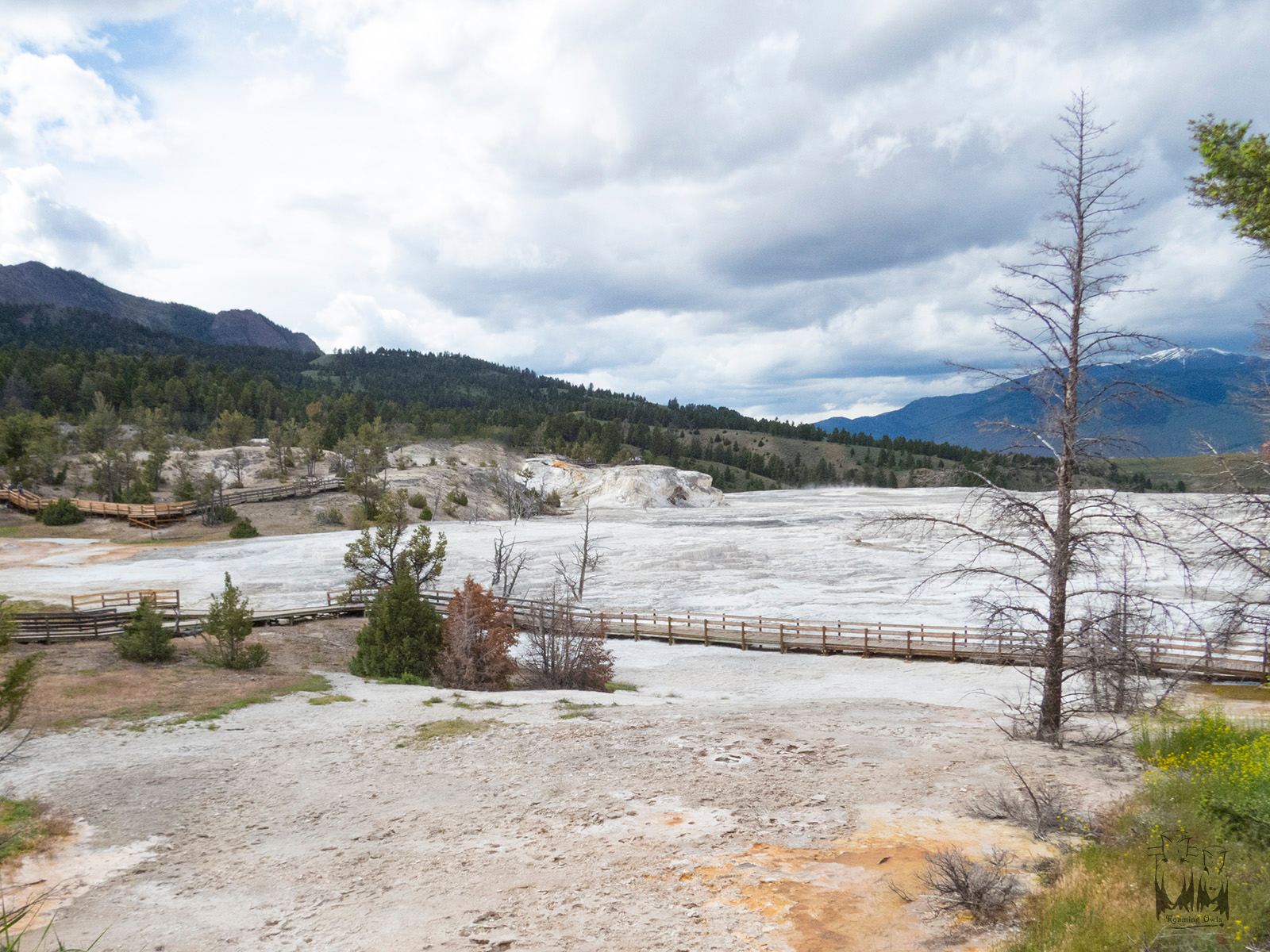
Because of the hot conditions and acidic nature of the springs, the area around the hot springs are often devoid of life except for bacteria.
We had to stop ! It was surreal , we have never encountered anything like this in our past. It was as if the entire area was wiped clean and the smell was horrible. Vinod told me it was sulfur fumes and we had to be little careful as it can cause suffocation and irritation. We went in to have a closer look and the place was completely alien. The vegetation in the area had died off indicating very hostile living conditions. The dead trees were charred black indicating death by fire.
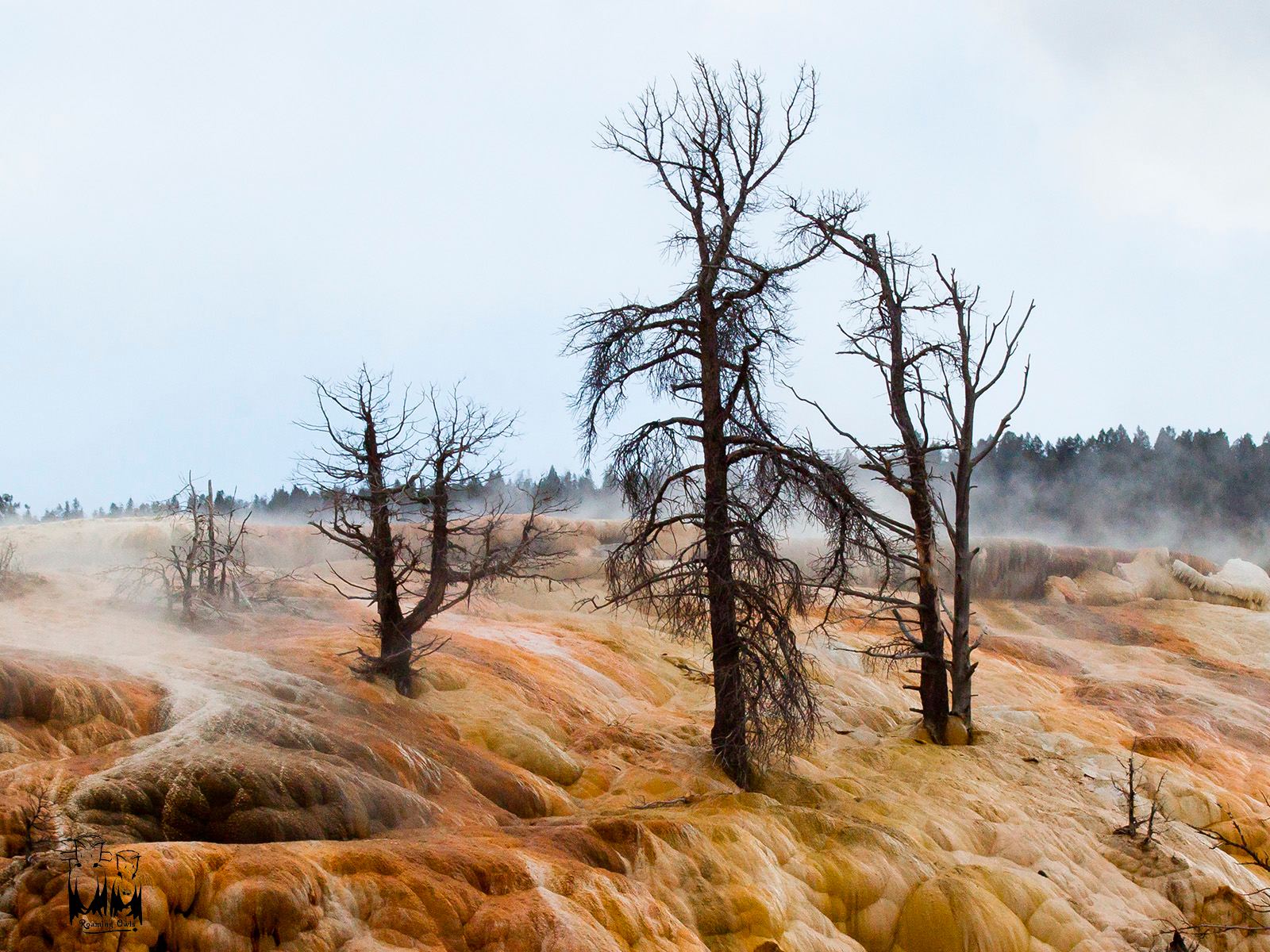
The acidic soil and the heat kills all major lifeforms like the trees. The dead trees stand there in the middle of hot water filled with bacteria. The bacteria causes the distinctive orange color because of carotenoids.
Before visiting any place we tend to find and read most of the information available just so that it will give us a better appreciation of the place. We did the same before visiting the Yellowstone national park too and we did find information but we were kind of biased towards other wildlife. But now that we stood there in front of it all of the bias was gone. The place had a beauty that was beyond words. One cannot walk or even approach it closely because of the hot water coming out of it. There were barriers erected to keep people out of such locations.
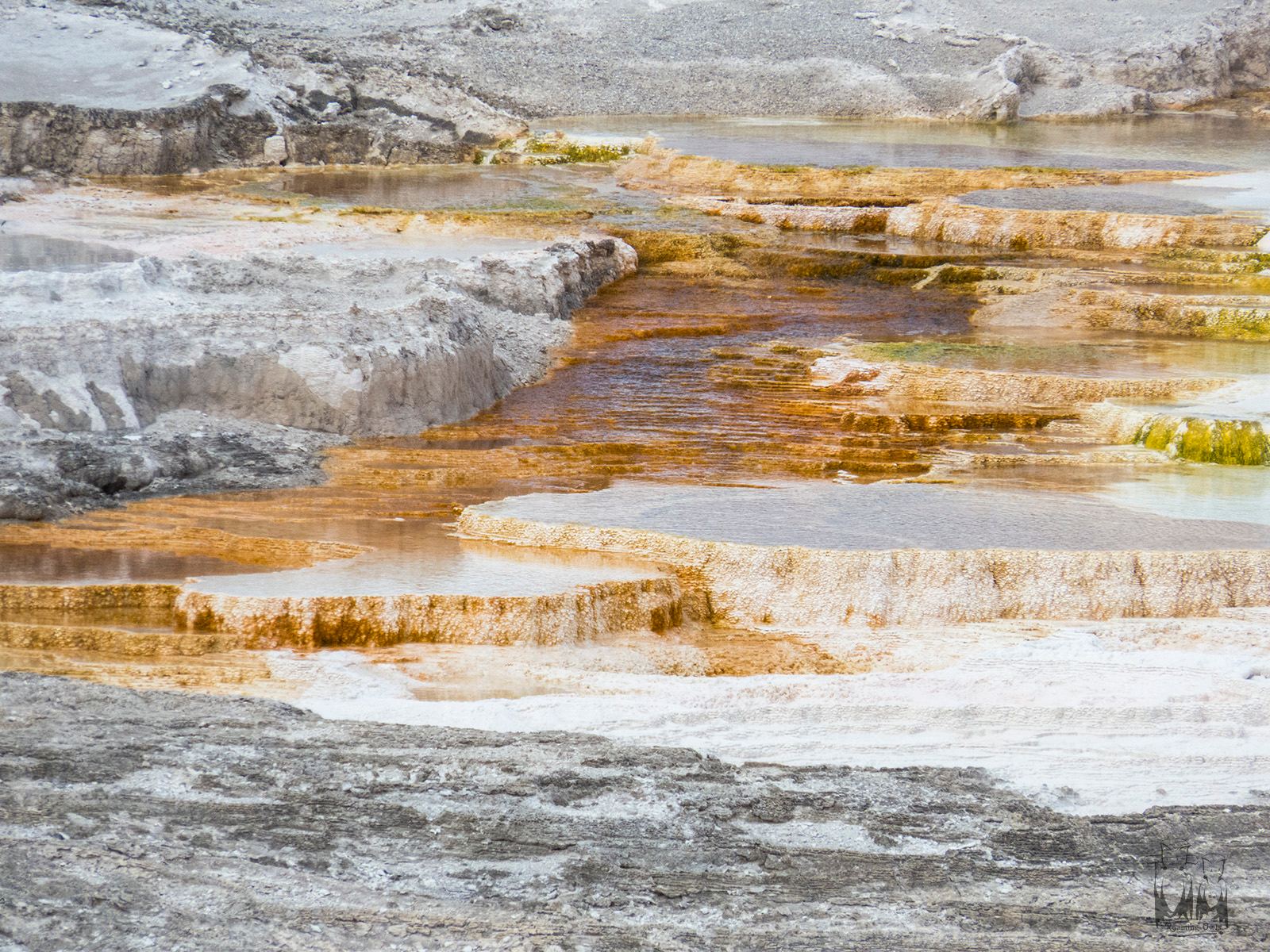
The pools are actual vibrant with microscopic life like bacteria with each color showing different temperature zones.
The boiling water coming from below quickly cools down when it reaches the surface and starts to support life. The rich orange color is because of the carotenoids containing bacteria such as Synechococcus bacteria and Chloroflexus bacteria. The different bacteria stick to different temperature zones and the orange color pertains to 65°C.
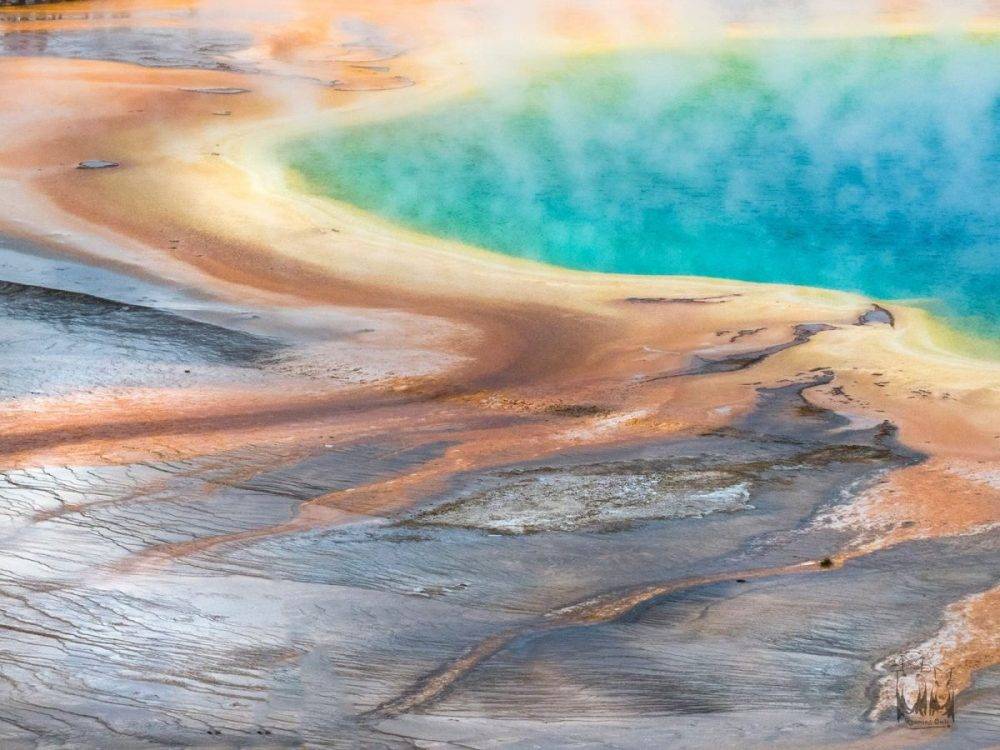
It was as if rainbow was on the ground. Dangers apart the hot springs are breathtaking to watch.
The colors are thus defined by the presence or absence of bacteria and the different temperatures of the water. The Yellow color is provided by Synechococcus. As the temperature gets lower as we go away from the vent , there is a greater diversity of microbes which can survive there. This diversity causes a brown color along the outer rim of the vent.
As we roamed around we had a thought. All the images that we were getting were from the eye level and we wanted to get a birds eye view. We looked around and a small hill was overlooking the place. We took the vehicle to the base of the hill through a dirt road and parked it. Since it was the land of the grizzlies we were on high alert. Though we wanted to see a grizzly, we were not sure what to do if we had a close encounter with it. We hoped to quickly ascend the place and take a picture and run. As we climbed, the real magnificence of the place came into light.
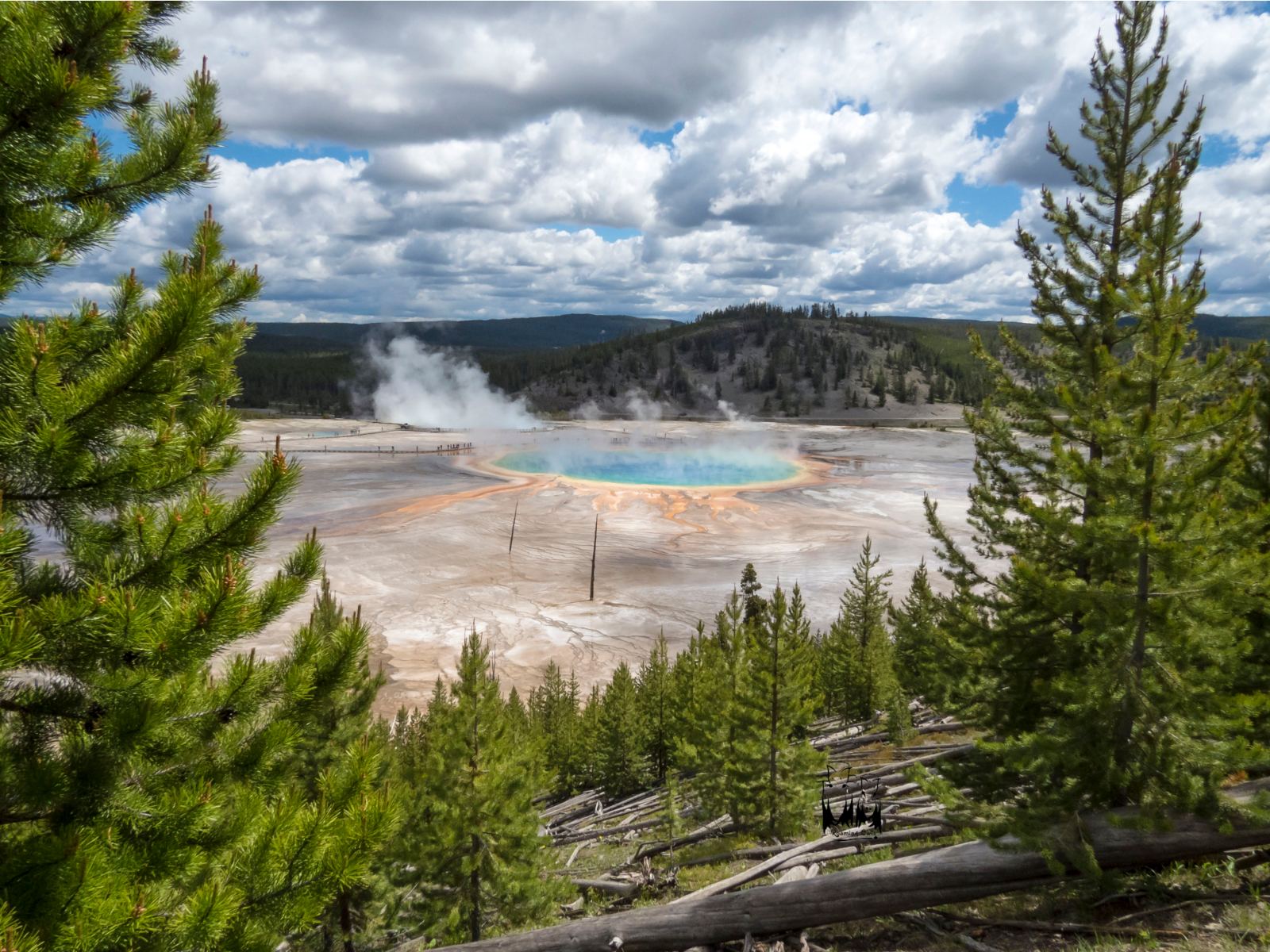
The size of the hot spring can be found out by looking at the little dots near the left hand corner of the spring. Those dots are humans but I wonder whether they know how tiny they are.
The huge crater with steaming water and the bright blue skies was an awesome sight to watch. We ended up taking our own time and sat for some time here. We decided to look for other geological features of the park as well. During our research before the trip, we had come across the fact that geothermal features are of three types – Hotsprings , Mud pots, and Fumaroles. Now that we had found the hot spring , it was time of the other two. With the help of the Yellowstone map we had located the next geothermal feature and found the Mud pot.
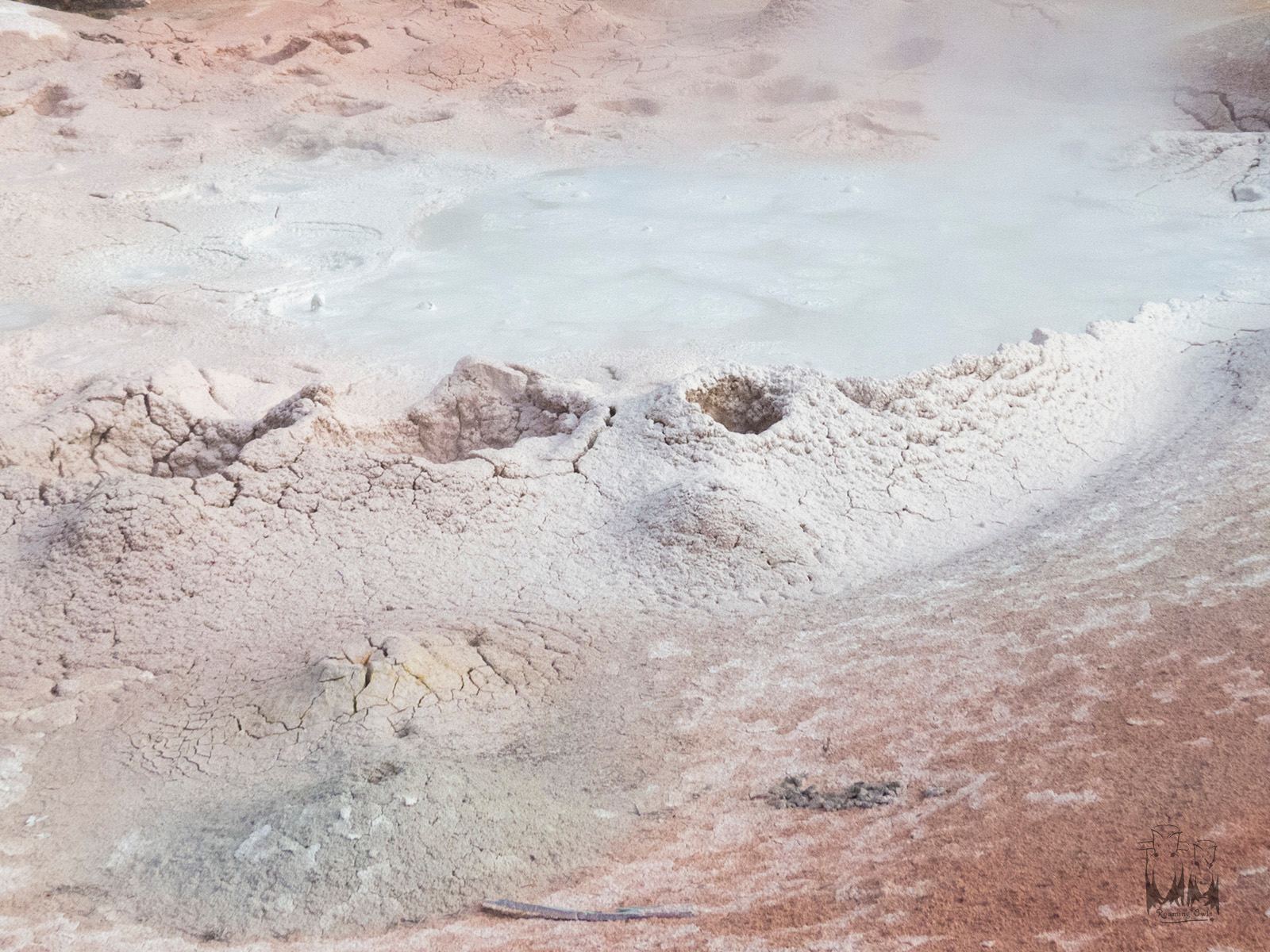
A mudpot geothermal feature is not as pretty as a hot spring but nonetheless impressive.
As the name suggests the soil was bubbling and spewing out hot soil. We later found that mud pots happen because of limited water and that the acid and micro organisms found inside it breakdown rocks into clay. The pink color is because of the iron compounds that are present in the mud. Having found the mudpot, the Fumarole was the only feature left but it was already late in the evening and we had to rush to our camping site. Late at night we decided the next possible location and we were up at the first light and headed to the spot.
All the while we did not lose track of wildlife or wildflowers. We saw Grizzlies, coyote, black bears , bison etc but I will cover those stories later. So it was action packed to the minute. I had one must see flower for the trip and I know that it was found in acidic soil. Acidic soil is the primary soil type around these areas and so I was searching for that as well.
We had to take a detour to reach this place and in the distance was shades of pink but only after closer look did I get goosebumps.
Elephant head flowers in Yellowstone national park
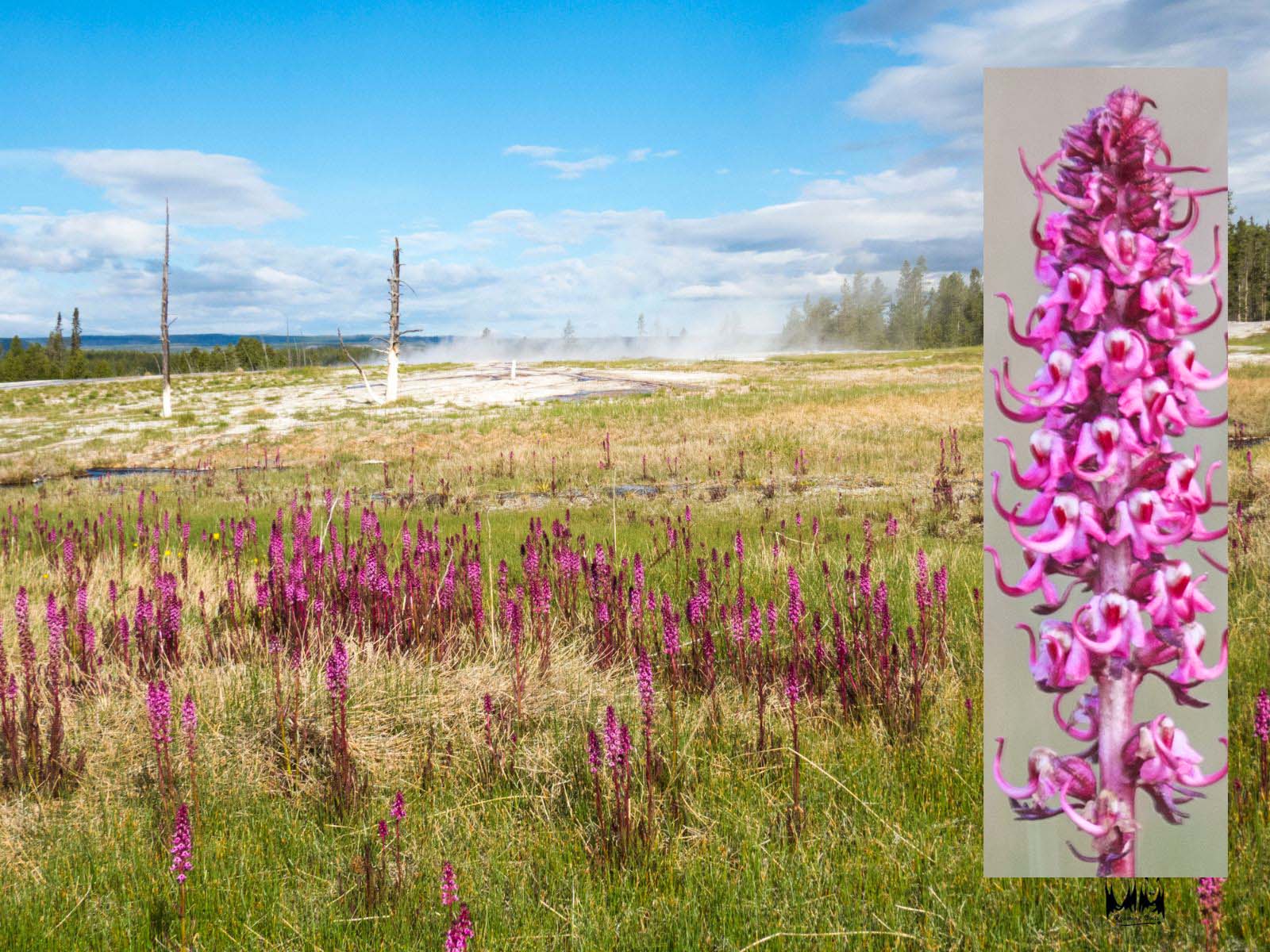
A group of elephant head flowers . On closer look each flower looks like the head of an elephant.
The elephant head flower / Pedicularis groenlandica is a flower like no other. This unusual and distinctive purplish flower resembles the head of an elephant. The scientific name groenlandica,means of Greenland, where it was first discovered. I was all heads over heels. Add to the find was a bog orchid nearby and Wyoming paintbrush. Now having found these beauties honestly I did not bother about the Fumarole but Vinod wanted to find the last one too. We carried on in search of the last geological feature and after 30 minutes there it was.
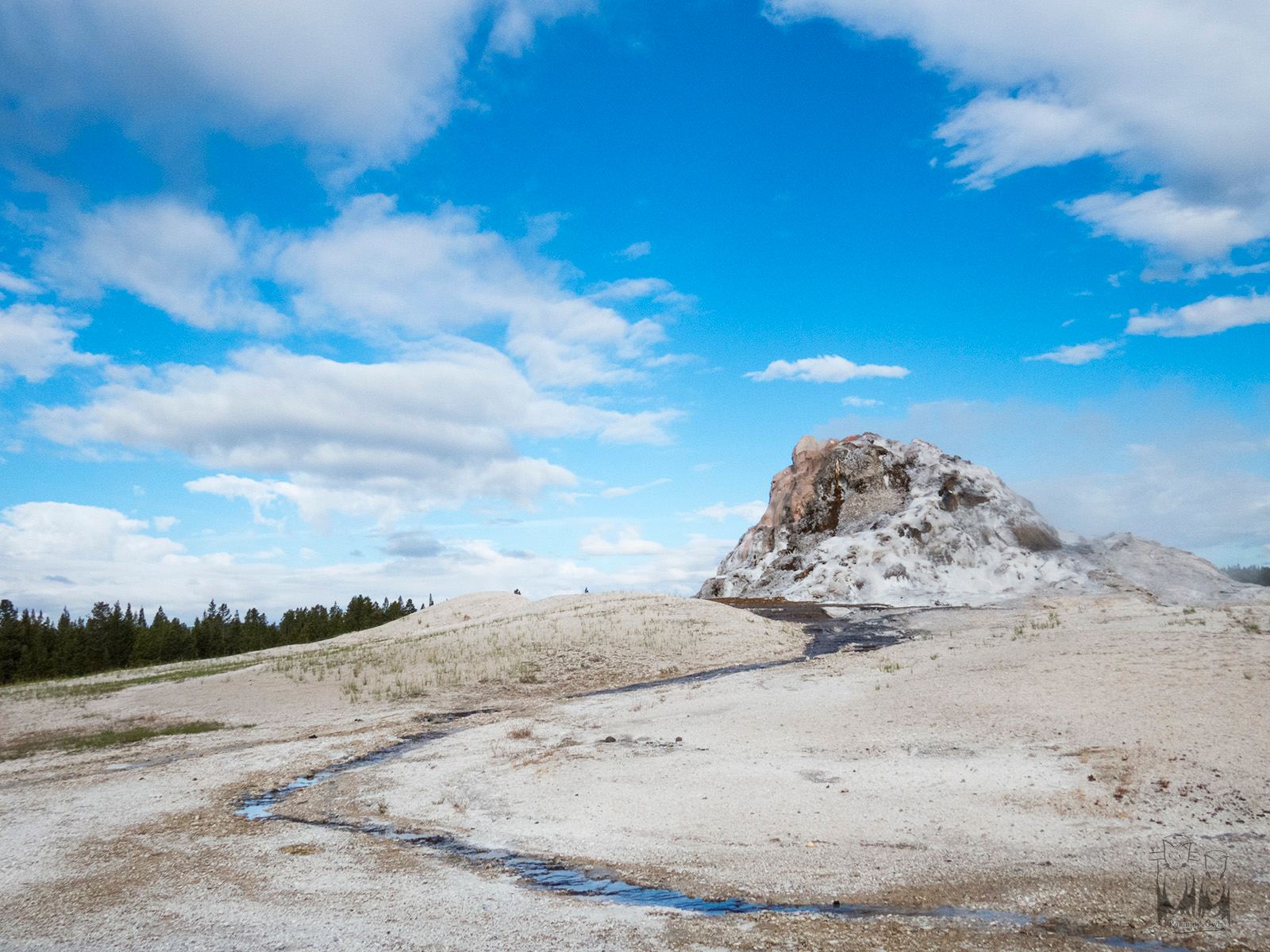
Our Fumarole did not let go of anything , not even steam , when we saw it ! Vinod was hoping for yellow sulfur gas and was disappointed 🙁
Since it was a tall feature it was visible from a distance. Technically speaking it is an opening in the planet crust through which the gases like carbon-di-oxide and sulfur-di-oxide escape. In our case there was no active emission of gases but we were happy to find it and ended our search.
The entire experience was kind of different, as this was the first time we had searched for something geological. We hoped that one day we could climb an actual active volcano but as of now a sense of satisfaction slowly crept into our heads.